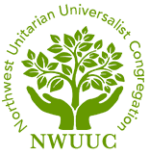Dear Friends,
I never get tired of hearing about or reading stories about ordinary people who do extraordinary things. So when Northwest Member Hugh Fordyce approached me last Sunday after service saying he had a perfect Mother’s Day story about two remarkable women from his hometown of Webster, West Virginia, I was intrigued.
The story is about a mother who inspired her daughter who, in turn, inspired a nation. With Hugh’s permission to use his narrative, I will retell it to you:
Ann Reeves Jarvis, the daughter of a Methodist minister who married and settled in Webster in the mid-1800s, became active in the church and civic affairs. She was particularly concerned about combatting the poor heath and sanitation conditions that then prevailed in Webster and other communities. She organized women into “Mothers’ Day Work Clubs,” who would teach basics such as sterilizing diapers and inspecting milk for infants.
During the Civil War when an outbreak of typhoid fever and measles broke out among the opposing armies, Ann Jarvis and her Mothers’ Day Work Clubs were called upon for help. Her answer: “You shall have it, but there will be no mistreatment of any of our members. We are composed of both the Blue and the Gray.”
Ann and her husband Granville had 11 children, but only four lived to adulthood. Their daughter Anna Jarvis was born in Webster in 1864, went to college, and eventually became a teacher in West Virginia and Philadelphia. Anna often heard her mother say that she hoped that someone would establish a memorial for all mothers, living and dead. After her mother’s death in 1905, Anna wrote to the superintendent of her mother’s Methodist Sunday School to suggest that the church in which her mother taught classes for 20 years should celebrate a Mother’s Day in her honor. And, on the second anniversary of Ann Reeves Jarvis’ death, the first Mother’s Day church service was held on May 12, 1907.
After this initial success, Anna Jarvis found her life cause in the establishment of a national Mother’s Day. She wrote hundreds of letters to legislators and business executives, and she spoke to countless groups in her quest. The movement gained momentum and, ultimately, a joint resolution of Congress designated the second Sunday in May as Mother’s Day; the resolution was approved by President Woodrow Wilson in 1914.
Carnations, the flower used to honor mothers today, were selected by Anna Jarvis because they were her mother’s favorite.
Thank you, Hugh, for sharing your pride in two women from your hometown of Webster. May we carry in our hearts always those mothers, living and gone, who have inspired us.
Yours,
Terry
